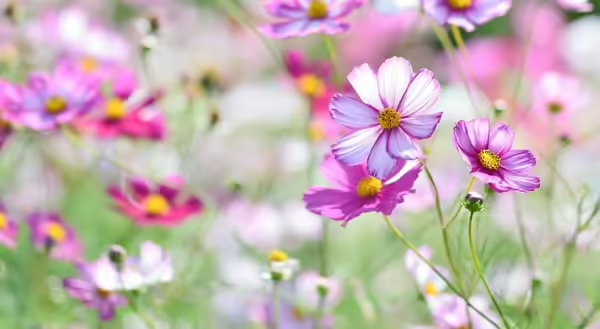
Spring brings thoughts of beautiful, colorful, fragrant blooms that brighten up our landscapes after a long winter.
But we aren't the only ones on the lookout for flowers. Pollinators are looking for them also. Heirloom flowers provide these pollinators with more of the resources they require.
Heirloom vs. Hybrid
Hybrids are a cross between two types that create specific traits such as flower shape, color, the height of the plant, or disease resistance. These varieties are very uniform in the first season of growth. Seeds saved from those first plants develop into plants with much more variation.
Heirloom varieties are open-pollinated. These flowers stay true to type if another variety does not cross-pollinate them. If you plan to save seed from your heirloom flowers, plant other varieties of the same plant at least 3 feet away from each other. Plant them closer together to experiment with creating your own varieties.
Benefits of heirloom flowers
If you are looking to create a pollinator-friendly flower garden, heirloom varieties are a good choice. They often produce more pollen and are a nectar food source for bees, butterflies, and hummingbirds. Plant in groups to make your garden even more attractive to pollinators.
Heirloom varieties are also known to have more fragrance than modern hybrids. You may notice that old-fashioned roses and sweet peas have more scent than newer varieties. Finding unique bloom color that varies from the current trend is also possible with heirloom varieties.
Because heirloom varieties are usually taller, they are excellent for cutting gardens. These beautiful blooms can brighten up a room. Since they grow taller, supporting them with stakes is a good idea.
Heirloom annuals for your flower garden
Here are some heirloom annuals that can be planted directly into your garden. Not only will they produce an abundance of blooms, but they will also provide much-needed resources for pollinators.
- Sweet peas, Lathyrus odoratus, have beautiful, colorful, fragrant blooms. This vining plant does best in cool weather and is one of the first blooming annuals in the garden. Harvesting flowers will encourage more bloom growth. They will produce blooms until the heat of summer. Look for old-fashioned heirloom varieties for the best sweet pea fragrance.
- Bachelor's buttons or cornflowers, Centaurea cyanus, are hardy annuals that self-sow. These pretty little blooms are great for a flower bed or as an addition to cut flower bouquets. They range in color from white to blue to burgundy. Bachelor's Buttons are a lovely flower to add to a cottage-type garden.
- Cosmos, Cosmos bipinnatus, are delicate-looking flowers but are drought tolerant and prefer poor soils. Varieties vary in color from white, pink, burgundy, yellow, and orange. These beautiful blooms are lovely bouquets. This cut and come again plant will produce flowers from summer to fall.
- Four o'clocks, Mirabilis jalapa, are easy to grow from seed. These flowers open in the cooler temperature of the evening. These trumpet-shaped blooms have a lemony-sweet scent that attracts hummingbirds and moths. Flowers can be white, yellow, and magenta with stripes or splashes of colors on the petals.
For more garden tips, check out the Illinois Extension Horticulture website at go.illinois.edu/exthorticulture.
This article also appeared in Gardener’s Corner Spring 2021. It is a quarterly newsletter from the Illinois Extension team of horticulture experts. Each issue highlights best practices that will make your houseplants, landscape or garden shine in any season.
Join the Gardener’s Corner email list and get direct access to timely tips!
MEET THE AUTHOR
Nicole Flowers-Kimmerle is a Agriculture and Natural Resources (Horticulture) Educator for Fulton, Mason, Peoria and Tazewell counties. She completed a bachelors of science degree in crop science at the University of Illinois, and a master’s of science degree in agronomy with an emphasis in weed science at the University of Wisconsin-Madison. She has also worked at Montana State University as a research associate where she worked on weed control in sugar beets and barley. She taught high school chemistry and other science classes where she was able to teach students in both the school garden and greenhouse. She works with both the Extension Master Gardeners and Extension Master Naturalists.
ABOUT THE BLOG
ILRiverHort is a blog that helps people connect to nature and grow.
Photo credit Pixabay.